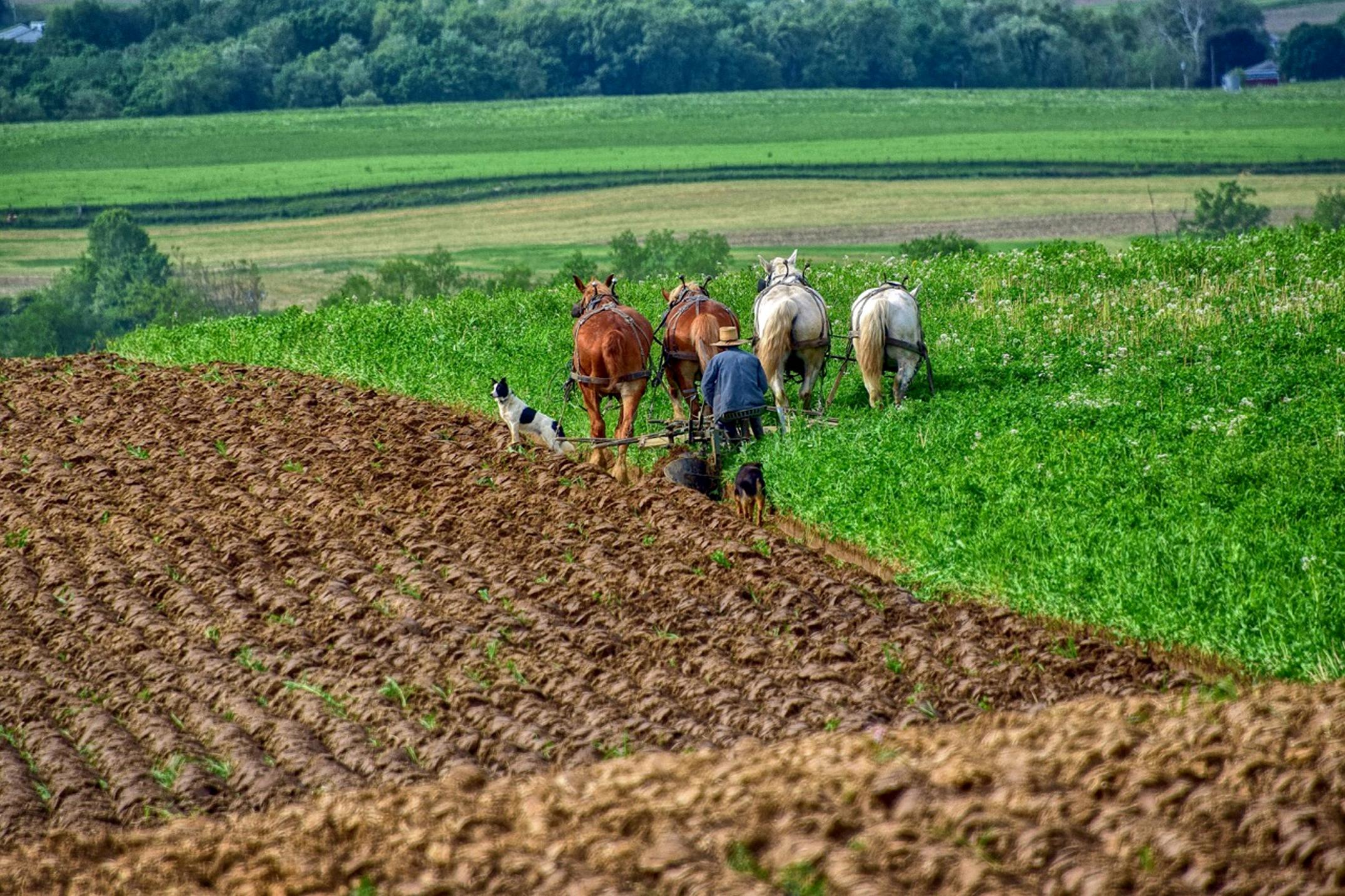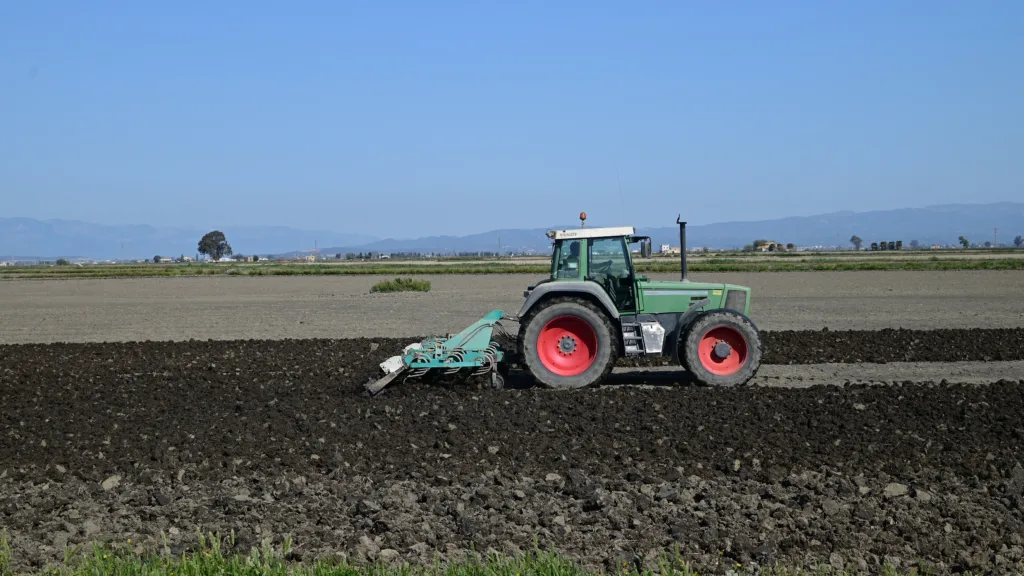Plowing is an essential practice in agriculture that helps farmers prepare ther fields for planting. It involves turning over the soil to create a seedbed that is suitable for planting crops. Plowing also helps to control weeds, pests, and diseases by burying them deep into the soil. In this article, we will discuss the different methods of plowing a field and the benefits of each.
The first method of plowing a field is by using a moldboard plow. This type of plow is pulled by a tractor and consists of a curved blade that turns the soil over as it moves forward. The moldboard plow is an effective tool for breaking up hard, compacted soil and creating a deep furrow for planting. However, it can also lead to soil erosion if not used properly.
Another method of plowing a field is by using a chisel plow. This type of plow is designed to break up the soil without turning it over. It has long, narrow shanks that penetrate the soil and loosen it, creating a shallow furrow for planting. The chisel plow is an excellent tool for conserving soil moisture and reducing soil erosion.
A third method of plowing a field is by using a disk plow. This type of plow consists of a series of circular disks that cut through the soil and turn it over. The disk plow is an effective tool for breaking up tough, compacted soil and creating a seedbed that is suitable for planting. However, it can also lead to soil erosion if not used properly.
When plowing a field, it is important to consider the type of soil and the crop that will be planted. Deep plowing is ideal for heavy soils, as it creates a larger moisture reservoir and gives more room for roots to grow. On lighter soils, occasional plowing to a depth of 15 to 18 inches is advisable.
Plowing should be done as early as possible before planting to allow the soil to settle and store up moisture. Late fall and winter plowing can also be beneficial, as it destroys weeds and many insects.
Plowing is an essential practice in agriculture that helps farmers prepare their fields for planting. There are different methods of plowing a field, including moldboard plowing, chisel plowing, and disk plowing. When plowing a field, it is important to consider the type of soil and the crop that will be planted. Deep plowing is ideal for heavy soils, while occasional plowing is advisable for lighter soils. Plowing should be done as early as possible before planting to allow the soil to settle and store up moisture.
What Is The Proper Method To Plow A Field?
The proper method to plow a triangular or irregular shaped field is to bisect the angles. This involves leaving a strip of equal width on each side of the line unplowed so that all turning can be done on firm soil. By practicing this method, deep dead furrows will develop. It is important to note that this method may not be suitable for all fields, as the shape and size of the field must be taken into consideration. Additionally, it is recommended to inspect the field for any obstacles or hazards before beginning the plowing process.

When Should A Field Be Plowed?
Plowing a field should be done well in advance of planting to allow the soil to settle into a good seed-bed condition and to store up moisture for the coming crop. It is recommended to plow as early as posible in the season to allow ample time for the soil to settle and retain moisture. Deep plowing is advised as it enlarges the moisture reservoir and provides more root room for the plants. Late fall and winter plowing is beneficial as it helps in destroying weeds and many insects. Therefore, it is best to plow the field in the fall or early winter to eliminate weeds and insects and prepare the soil for the coming growing season.
How Deep Should You Plow A Field?
According to the research conducted by Merrill, the depth of plowing a field depends on the type of soil. On deep heavy soil, it is recommended to plow to a depth of 10 inches, as this depth can ensure good and possibly better results than plowing to a greater depth. However, on lighter soils, it is advisable to occasionally plow to a depth of 15 to 18 inches. the depth of plowing a field depends on the soil type, and it is important to consider the appropriate depth for the best results.
Is It Plowing Or Ploughing?
Both “plowing” and “ploughing” are correct spellings of the same word, which refers to the act of tilling soil with a plow. The difference lies in the regional spelling preferences. In the United States, it is more common to use “plowing” while in the United Kingdom, “ploughing” is the preferred spelling. In India, “ploughing” is also the more common spelling.
It is important to note that both spellings are acceptable and recognized in English language, and the choice of which to use largely depends on the context and audience. If you are writing for an American audience, it may be more apropriate to use “plowing,” while “ploughing” may be more suitable for a British or Indian audience.

Conclusion
Plowing a field is a crucial step in preparing the soil for planting. It not only destroys weeds and insects but also creates a good seed-bed condition and increases the moisture reservoir. Bisecting the angles of triangular or irregular shaped fields is a simple and effective method for plowing. It is important to plow as long before planting as possible, to ensure the soil has ample time to settle and store up moisture. The depth of plowing shuld be adjusted based on the type of soil being worked with. On deep heavy soil, plowing to a depth of 10 inches is sufficient, while on lighter soils an occasional plowing to a depth of 15 to 18 inches is advisable. It is also important to avoid creating deep dead furrows by leaving a strip of unplowed soil for turning. proper plowing is essential for a successful crop yield and should not be overlooked by farmers and growers.
